A Guide to Customer Service and Support Automation
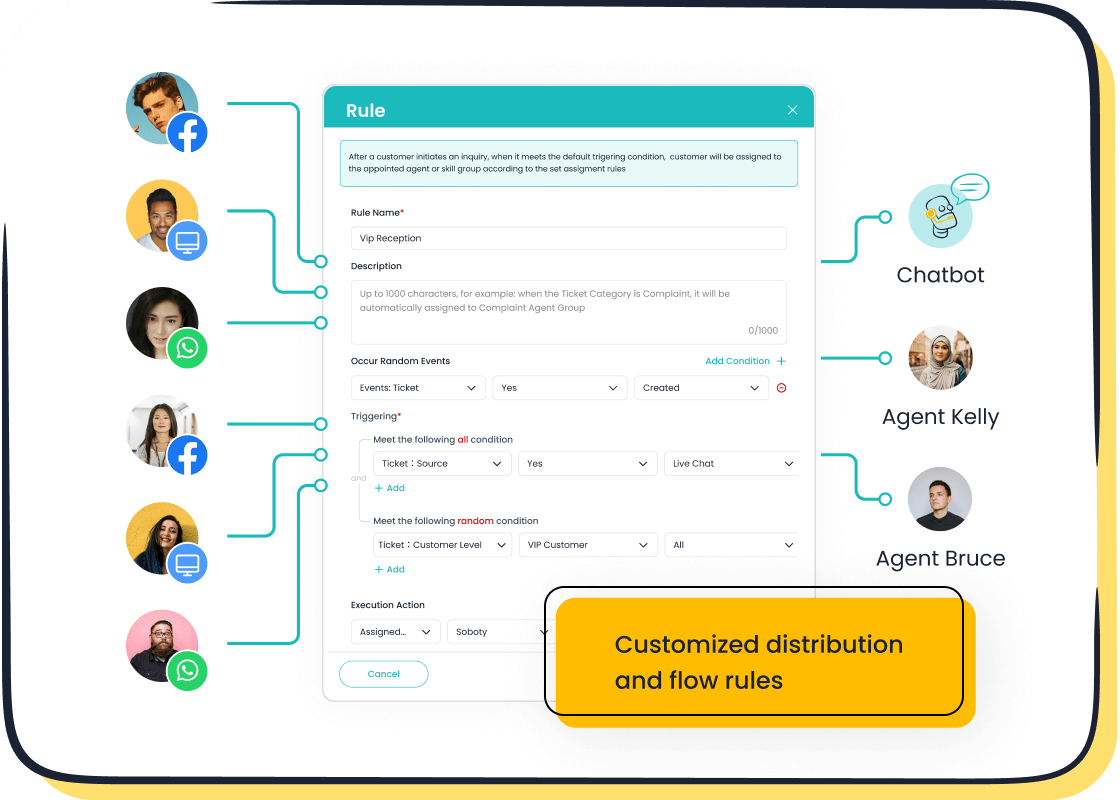
Customer service automation uses technology to streamline interactions between businesses and customers. It aims to improve efficiency, reduce costs, and enhance customer satisfaction. For example, automation can cut service costs by up to 40% and handle 80% of interactions without human agents by 2030. Tools like Sobot Live Chat simplify this process by integrating AI-powered features. Sobot enables instant responses, omnichannel support, and personalized service. In 2021, automated solutions like these increased problem-solving rates to 92%, showcasing their impact on customer service and support automation.
Understanding Customer Service and Support Automation
Definition and Key Features
Customer service automation refers to the use of technology to handle customer inquiries and tasks without human intervention. It simplifies processes, reduces costs, and enhances customer satisfaction. Key features of customer service and support automation include:
| Feature | Description |
|---|---|
| AI-Powered Chatbots | Engage with customers to provide instant answers to FAQs and assist with routine requests. |
| Automated Ticketing Systems | Streamline support workflows by automating classification and routing of customer inquiries. |
| Self-Service Portals | Empower customers to find answers independently, reducing the need for direct agent interaction. |
| AI-Powered Analytics | Automate data collection and analysis to identify trends and improve customer satisfaction. |
These features make automated customer service a powerful tool for improving efficiency and customer experiences.
How Automated Customer Service Works
Automated customer service operates through advanced technologies like artificial intelligence and machine learning. Here's how it works:
- Pre-Programmed Responses: Systems provide quick replies to common questions.
- Natural Language Processing (NLP): Understands and processes human language for better query handling.
- Machine Learning: Learns from past interactions to improve accuracy over time.
- Escalation Protocols: Transfers complex issues to human agents when necessary.
- Multi-Channel Integration: Ensures seamless communication across platforms like email, chat, and social media.
These systems streamline tasks, improve customer interactions, and reduce operational costs. For example, companies using automated solutions can cut customer service costs by 30%, according to PwC.
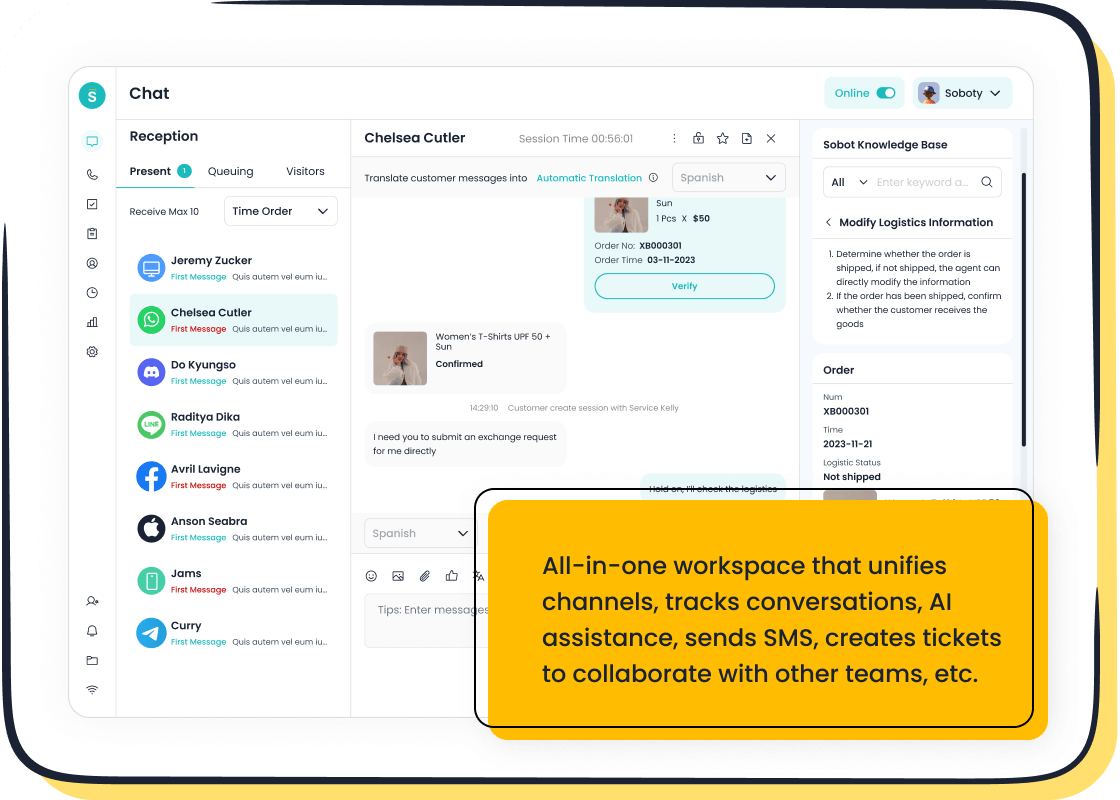
Tools and Technologies, Including Sobot Live Chat
Many tools drive customer service automation, but Sobot Live Chat stands out. It supports omnichannel communication, allowing you to interact with customers on websites, apps, and social media platforms like WhatsApp and Instagram. Its AI-powered features enable instant responses, customer segmentation, and personalized service. With built-in analytics, you can track over 150 indicators to optimize your operations.
Sobot Live Chat also integrates with other systems, ensuring agents have access to connected records for better collaboration. This tool not only improves efficiency but also boosts conversion rates by 38%. As the global chatbot market is expected to grow from $1.34 billion in 2024 to $3 billion by 2030, tools like Sobot Live Chat are becoming essential for automating customer service.
Tip: Start automating customer service today to stay ahead in the evolving digital landscape.
Benefits of Customer Service Automation
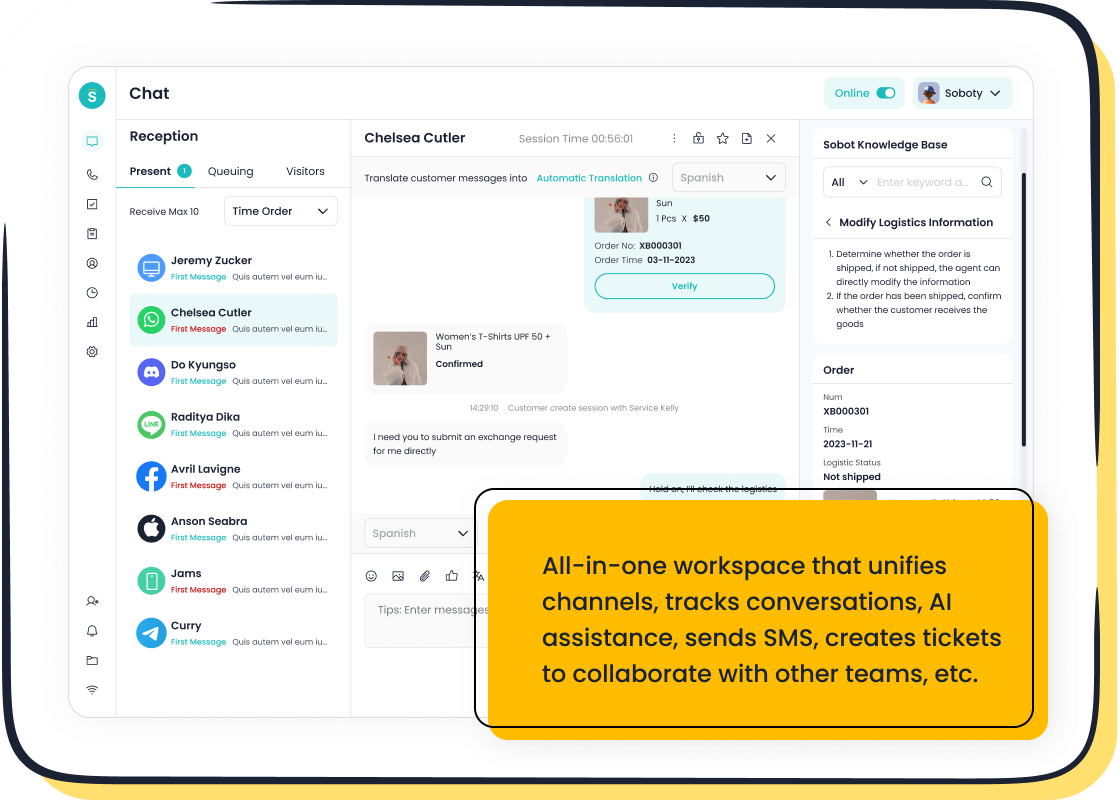
Enhanced Efficiency and Speed
Automating customer service significantly improves efficiency and speeds up processes. Automated systems handle routine tasks like answering FAQs, routing tickets, and collecting customer data. This allows your team to focus on more complex customer interactions. For example:
- Teams using AI in customer service report a 94% increase in productivity.
- Automation streamlines workflows and enhances collaboration, ensuring faster resolutions.
- 90% of customers value immediate responses, with 60% expecting replies within 10 minutes.
By meeting these expectations, automated customer service not only boosts satisfaction but also builds loyalty. Tools like chatbots and virtual assistants ensure that your business operates efficiently, even during peak times.
Cost Savings and Scalability
Customer service automation offers substantial cost savings while enabling your business to scale effortlessly. Automated systems reduce the need for additional staff during busy periods and optimize resource allocation. Consider these statistics:
| Benefit Description | Value | Source |
|---|---|---|
| Reduction in staffing needs during peak times | Up to 68% | Gladly |
| Cost reduction in customer service operations | 35% | McKinsey |
| Savings from reduced ticket volumes | $1.3 million | Zendesk |
| Projected reduction in agent labor costs | $80 billion by 2026 | Gartner |
Automating customer service ensures your business can handle increasing demands without compromising quality or incurring excessive costs.
Improved Customer Experience with 24/7 Availability
Automated customer service enhances customer experience by providing round-the-clock support. AI-powered chatbots and virtual assistants ensure customers receive immediate assistance, regardless of the time or location. Key benefits include:
- 24/7 availability meets global demands and improves accessibility.
- Instant responses improve satisfaction and foster trust.
- Self-service options empower customers to resolve issues independently.
Surveys reveal that 90% of customers consider immediate responses essential, while 76% of B2B customers expect businesses to understand their unique needs. Automated systems meet these expectations, delivering an enhanced customer experience that strengthens relationships and drives loyalty.
Challenges and Limitations of Automated Customer Service
Addressing the Lack of Human Touch
Automated customer service often struggles to replicate the empathy and understanding of human agents. Many customers feel disconnected when interacting with chatbots and virtual assistants. A survey highlights this sentiment:
| Statistic | Percentage |
|---|---|
| Prefer human interaction over chatbots | 90% |
| Believe humans understand needs better | 61% |
| Feel AI has caused loss of human touch | 59% |
| Prefer companies to avoid using AI | 64% |
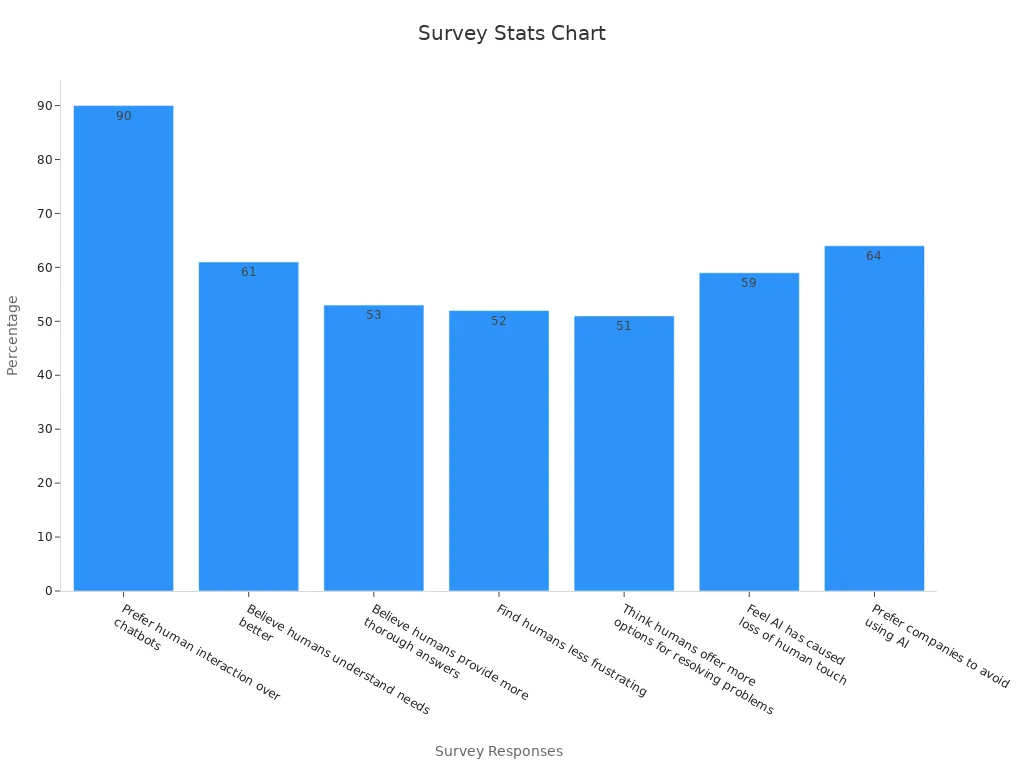
These statistics reveal the importance of balancing automation with human interaction. While automating customer service improves efficiency, you must ensure customers still feel valued. Strategies like integrating escalation protocols and offering hybrid support models can help address this challenge.
Managing Errors and Miscommunication
Automated systems, though efficient, are not immune to errors. Miscommunication often arises when chatbots fail to understand complex queries or provide inaccurate responses. For instance, natural language processing (NLP) may misinterpret customer intent, leading to frustration. Errors in automated customer service can damage trust and satisfaction.
To minimize these issues, you should regularly update and train your systems. AI-powered tools improve over time through machine learning, but they require consistent monitoring. Additionally, providing clear escalation paths ensures that unresolved issues reach human agents promptly. This approach reduces errors and enhances customer interactions.
Overcoming Implementation Hurdles
Implementing customer support automation comes with its own set of challenges. Businesses often face obstacles such as:
- Integration with existing systems
- Resistance to change from employees and customers
- Data privacy and security concerns
- Complexity of automation tools
- Budget constraints
Successful implementation requires a well-defined plan. Case studies show that businesses achieve better results by aligning automation with their goals and involving employees in the process. Key strategies include:
- Prioritizing areas for automation based on business needs
- Training employees to use automated tools effectively
- Addressing resistance by emphasizing how automation improves job performance
By following these steps, you can overcome hurdles and unlock the full potential of customer service and support automation.
Steps to Implement Customer Service Automation
Assessing Business Needs and Goals
Before implementing customer service automation, you need to evaluate your business needs and goals. Start by identifying areas where automation can have the most significant impact. Consider both your operational requirements and customer expectations. For example, if your customers frequently ask repetitive questions, chatbots and virtual assistants can handle these efficiently.
Benchmark statistics can guide your assessment. Automation can increase productivity by 94% and reduce costs by up to 40%. These metrics highlight the potential benefits of automated customer service tools. Additionally, analyze your current customer service processes to identify gaps that automation can fill. This step ensures that your automation strategy aligns with your business objectives and enhances the overall customer experience.
Selecting Tools Like Sobot Live Chat
Choosing the right tools is crucial for successful automation. Look for solutions that offer robust features, seamless integration, and scalability. Sobot Live Chat is an excellent example. It supports omnichannel communication, enabling you to interact with customers across websites, apps, and social media platforms. Its AI-powered capabilities, such as customer segmentation and built-in analytics, optimize customer interactions and improve efficiency.
When selecting tools, focus on their ability to integrate with your existing customer support system. High-functioning software like Sobot Live Chat ensures smooth collaboration between automated and human agents. This approach not only enhances productivity but also improves customer satisfaction by providing personalized and timely support.
Training Teams and Integrating Systems
Training your customer support teams is essential for a smooth transition to automation. Equip your team with the knowledge and skills to collaborate effectively with automated tools. Focus on helping them understand the system’s capabilities and how it reduces mundane tasks. For instance, Sobot’s unified workspace simplifies workflows, allowing agents to concentrate on complex issues.
Integration is another critical step. Ensure your automated customer support system connects seamlessly with existing platforms. This integration streamlines customer service processes and enhances data accessibility. Regular training and updates will help your team adapt to new tools, boosting confidence and productivity. By addressing resistance and emphasizing the benefits, you can ensure a successful implementation.
Balancing Automation with Personalization in Customer Service

Strategies for Maintaining a Human Touch
Balancing automation with a human touch ensures your customers feel valued and understood. While automated tools like AI-powered chatbots handle repetitive tasks efficiently, they cannot replace empathy and emotional intelligence. To maintain a human connection, consider these strategies:
- Hybrid Support Models: Combine automated systems with human agents. For instance, chatbots can handle FAQs, while complex issues escalate to trained representatives.
- Empathy in AI Responses: Program AI-powered customer service tools to use empathetic language. This approach helps customers feel heard, even during automated interactions.
- Personalized Escalation Protocols: Ensure customers can easily switch to human support when needed. This flexibility builds trust and satisfaction.
Companies like Breeze Airways use AI for empathetic communication during sensitive situations, proving that automation and human touch can coexist effectively.
Using AI to Enhance Personalization
AI-powered customer service tools excel at creating personalized experiences. They analyze customer data to deliver tailored solutions. Here’s how AI enhances personalization:
- Data-Driven Insights: AI gathers and analyzes data from multiple channels, building detailed customer profiles. This allows you to offer personalized recommendations and solutions.
- Proactive Engagement: Predictive analytics anticipate customer needs, enabling you to address issues before they arise. For example, online retailers can suggest products based on past purchases.
- Scalable Personalization: Automation ensures every interaction feels unique, even at scale. AI-powered chatbots can provide tailored responses to thousands of customers simultaneously.
These capabilities improve customer satisfaction scores and retention rates, making AI an essential tool for personalized service.
Examples of Successful Automation-Personalization Balance
Several companies demonstrate how to balance automation with personalization effectively. Their success highlights the potential of combining these approaches:
| Company | Automation Tools Used | Measurable Outcomes |
|---|---|---|
| Amazon | Virtual assistants, chatbots, robotics | Improved customer satisfaction, efficiency, timely order fulfillment |
| Citibank | Chatbots, AI algorithms | Quicker processing times, reduced need for human intervention |
| Marriott | Mobile app automation | Enhanced guest experience, improved convenience |
These examples show how businesses can use automation to enhance efficiency while maintaining a personal touch. Tools like Sobot Live Chat, with its omnichannel support and AI-powered features, help businesses achieve similar results by providing personalized and efficient customer interactions.
Customer service automation has transformed how businesses interact with customers, offering unparalleled efficiency, cost savings, and 24/7 availability. Automated tools streamline repetitive tasks, allowing your team to focus on building stronger relationships and fostering customer loyalty. For instance, automation increases productivity by 94% and reduces costs by up to 40%, making it an essential strategy for modern businesses.
Balancing automation with personalization remains crucial. While automated systems handle routine queries, human agents bring empathy and understanding to complex issues. This balance ensures customers feel valued and understood, enhancing satisfaction and trust.
The future of customer service lies in integrating advanced AI technologies. These innovations will enable businesses to deliver hyper-personalized experiences at scale, further improving efficiency and customer engagement. As 91% of executives view AI positively for customer interactions, adopting these technologies will keep your business competitive.
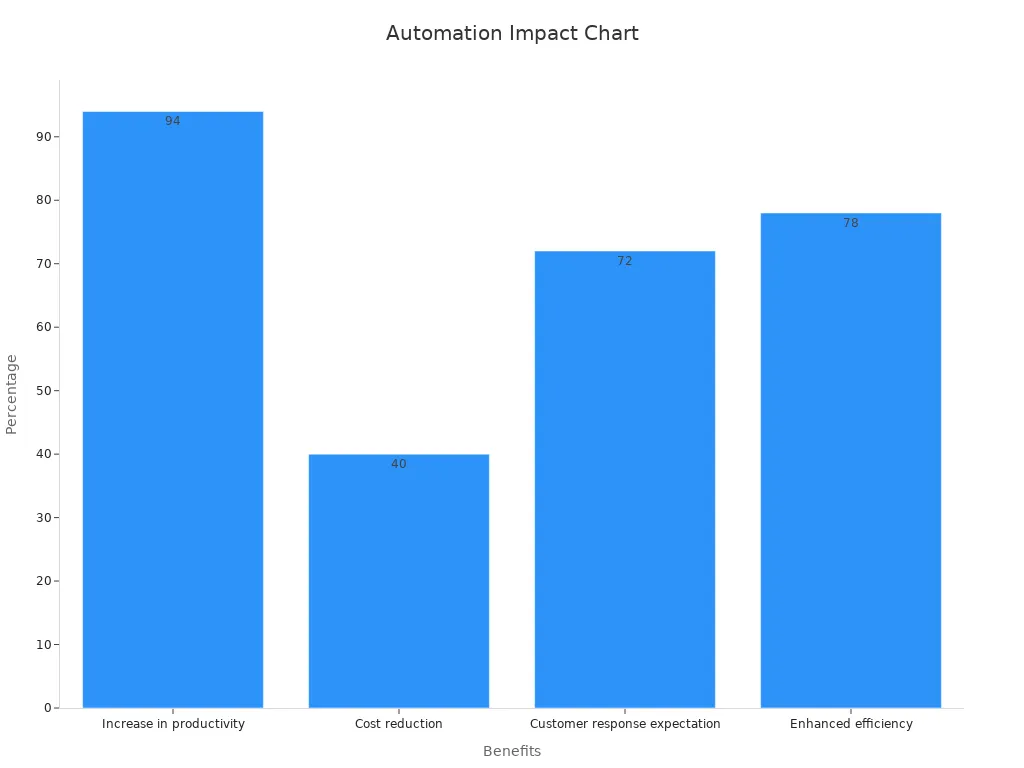
FAQ
What is customer service automation?
Customer service automation uses technology to handle customer inquiries without human intervention. It includes tools like chatbots, ticketing systems, and self-service portals. These systems streamline processes and improve efficiency.
How does automated customer service improve efficiency?
Automated systems handle repetitive tasks like answering FAQs and routing tickets. This allows your team to focus on complex issues. Automation speeds up responses and reduces errors, enhancing overall productivity.
Can automated tools personalize customer interactions?
Yes, automated tools use AI to analyze customer data and provide tailored solutions. They deliver personalized recommendations, proactive engagement, and unique responses, even at scale.
What industries benefit most from automated customer service?
Industries like retail, financial services, gaming, and education benefit greatly. Automated tools help these sectors manage high volumes of inquiries, improve customer satisfaction, and reduce operational costs.
Is it possible to balance automation with human interaction?
You can balance automation with human interaction by using hybrid models. Automated systems handle routine tasks, while human agents address complex issues. This approach ensures efficiency and empathy coexist.
See Also
Enhancing Customer Support Through Effective Live Chat Techniques
Elevate SaaS Customer Support Using Live Chat Approaches
Transforming Customer Support With AI Service Agents
Ten Guidelines for Selecting Social Media Support Tools
Increasing Operational Efficiency With AI Customer Service Solutions